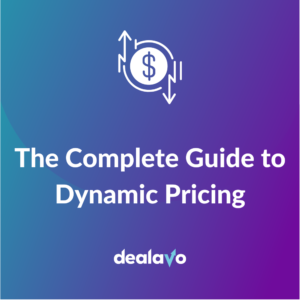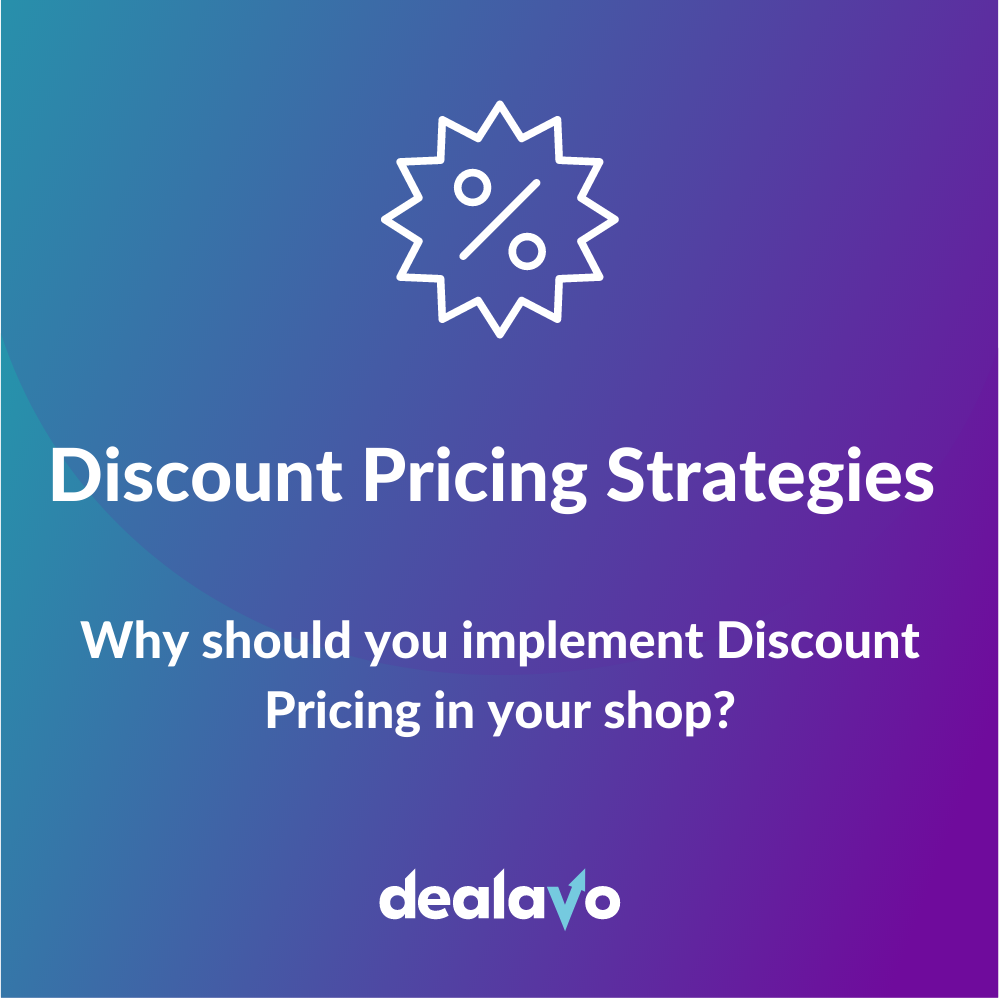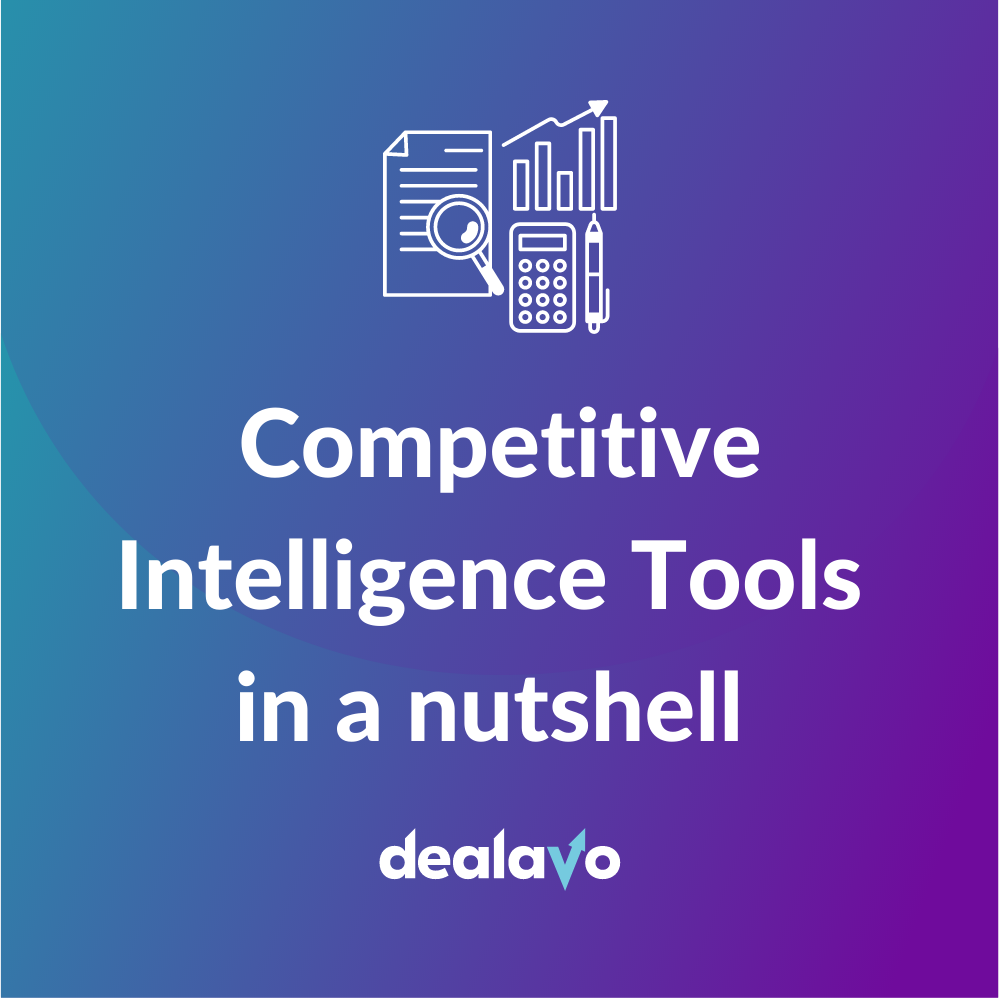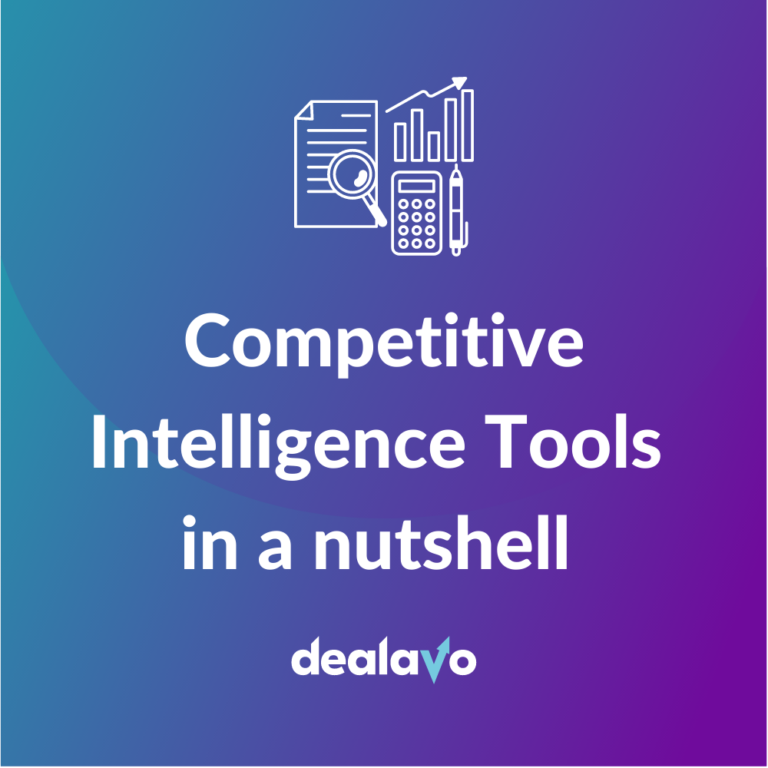
The Complete Guide to Dynamic Pricing
- 03 April 2023
Dynamic pricing is a strategy that has become increasingly popular in recent years, especially in the e-commerce industry. It involves adjusting the price of a product or service in real-time based on various factors such as demand, supply, seasonality, and customer behavior. Dynamic pricing can help businesses maximize their revenue and profitability by ensuring that prices are always optimized for current market conditions. However, implementing this strategy requires a deep understanding of pricing principles, data analysis, and customer behavior.
This guide aims to provide businesses with a comprehensive overview of dynamic pricing, its benefits, and the best practices to help them implement it successfully.
What is Dynamic Pricing, and why it is beneficial for your business?
Consumers are always looking for the best value for their money. They want to feel that they are getting a fair price for the quality and features of the product or service they are purchasing. If the price is too high, they may choose to look for a cheaper alternative or not make the purchase at all. On the other hand, if the price is too low, consumers may question the quality of the product or believe that it is too good to be true. This is where dynamic pricing comes in handy. It can benefit businesses in several ways.
Firstly, it can help businesses maximize revenue and profitability by ensuring that prices are always optimized for current market conditions. This means that e-commerce companies can charge higher prices during periods of high demand and lower prices during periods of low demand, which can help them sell more products or services and generate more revenue.
Increase your sales in e-commerce!
Secondly, dynamic pricing can help businesses remain competitive by ensuring that their prices are in line with other sellers. By monitoring competitors’ prices and adjusting their prices accordingly, companies can avoid losing customers to cheaper online stores.
Thirdly, dynamic pricing can help businesses improve customer loyalty and satisfaction. By offering personalized pricing based on users’ behavior and preferences, e-commerce companies can show customers they are valued and increase the likelihood of repeat purchases.
What is more, businesses can use this strategy to manage inventory levels more effectively by pricing products based on their availability. By offering lower prices for items that are overstocked, online shops can clear out inventory faster and avoid having to sell products at a loss.
Finally, it is worth mentioning that dynamic pricing can be used to improve companies’ profit margins by pricing products based on their costs. By taking into account production or material expenses, businesses can ensure that they are making a profit on each sale, which can help improve overall profitability.
Although these are just a few of the key advantages of dynamic pricing, it is difficult to underestimate its impact on the e-commerce business. This strategy has great potential, allowing you to build a competitive advantage and increase revenues. However, its implementation is not easy. It requires a good knowledge of pricing strategies and access to advanced automation tools. These are the issues we will cover later in this guide.
Analyzing the customer’s purchase history to adjust prices accordingly
One of the effective dynamic pricing techniques is analyzing a customer’s purchase history. It is a powerful way to adjust prices accordingly and provide a personalized experience. Businesses can identify the products or services that the customers have bought in the past, the frequency of their purchases, and the price points at which they have made purchases.
Using this data, companies can tailor their pricing strategy to the specific customer. For example, a user who frequently purchases a certain product may be more likely to buy it again at a slightly higher price point. In this case, the online shop can increase the price of the product for that particular customer while still offering it at a lower price point for other people who may be less likely to purchase it.
Alternatively, if a customer has not made a purchase in a while, the company may want to offer a discount or promotion to encourage them to make a purchase. By analyzing the user’s shopping history, the business can identify the products or services that the customer has shown interest in and lower the prices of those specific items.
Analyzing a customer’s purchase history can also help e-commerce companies identify patterns in their shopping behavior. For example, if a user tends to finalize transactions at a certain time of day or week, the business can offer promotions or discounts during those times to encourage more purchases.
Therefore, the analysis of shopping data guarantees benefits in at least two main areas: increasing sales and building positive customer experience. Combined with the use of automation tools, this information will allow you to accurately respond to the needs of your audience and gain their loyalty.
Setting up an automated dynamic pricing system
The effectiveness of dynamic pricing will largely depend on which software for monitoring and updating offers you choose. So, get to know the solutions available on the market and verify which one best suits your business needs. Also, note that no dynamic pricing application will provide you with the desired results if its use is not based on a well-planned pricing strategy.
As you can see, setting up an automated dynamic pricing system can be complex, but here are some general steps to consider:
DEFINE YOUR PRICING STRATEGY
Before setting up an automated dynamic pricing system, you need to define your pricing strategy. This includes identifying your pricing objectives, such as maximizing revenue or market share and determining the factors that will influence your pricing decisions, such as market demand, competitor prices, and inventory levels. You will learn more about setting a strategy later in this guide.
COLLECT AND ANALYZE DATA
To automate dynamic pricing, you need to access information on customer behavior, market trends, and competitor prices. This can be done using a variety of tools, such as pricing software, but also data analytics platforms, and machine learning algorithms.
Automate your prices with Dealavo!
CHOOSE A PRICING SOFTWARE
There are many tools available that can automate your pricing strategy. One of the popular options is Dealavo. Its comprehensive nature and easy operation make it a perfect solution for both small entrepreneurs and large online stores. Remember to choose a pricing software that aligns with your business objectives.
INTEGRATE YOUR PRICING SOFTWARE
Once you have chosen the right tool, you need to integrate it with your existing systems, such as your e-commerce platform or point-of-sale system. This can involve configuring APIs, webhooks, or other integration methods to ensure that your pricing software can access the necessary data and make pricing adjustments in real-time.
TEST AND REFINE YOUR PRICING STRATEGY
After setting up your automated dynamic pricing system, it is important to continuously monitor its performance and refine your pricing strategy as needed. This can involve conducting A/B tests, analyzing customer feedback, and adjusting your pricing objectives and factors to ensure that your strategy is effective and aligned with your business goals.
If you are looking for a good dynamic repricing tool, find out more about Dealavo. It is a competitive intelligence and price monitoring software that helps businesses track other sellers’ actions and product data across multiple online marketplaces. The platform enables users to monitor pricing and product availability in real-time and provides them with insights and alerts to help them stay ahead of the competition.
With Dealavo, you can track pricing changes, promotions, and product availability across multiple marketplaces, including Amazon, eBay, and Walmart. The platform provides you with a dashboard that displays pricing trends and competitor information, enabling you to make data-driven decisions when it comes to pricing and product strategy.
In addition to pricing data, Dealavo also provides you with insights into product reviews, ratings, and customer feedback, helping you to identify areas where you can improve your products and customer service. Overall, Dealavo is a valuable tool for businesses looking to stay competitive in the e-commerce space by providing them with the data and insights they need to make informed decisions.
Strategies to ensure effective implementation of dynamic pricing
E-commerce businesses have access to a variety of pricing strategies that can help them maximize profits and stay competitive in the online marketplace. To effectively use dynamic pricing software, first you need to choose the right solution for your business. Here are some pricing strategies commonly used in e-commerce:
COST-PLUS PRICING
This solution involves adding a markup to the cost of a product to determine its selling price. The markup can be a percentage of the cost or a fixed amount. Cost-plus pricing is a straightforward strategy that ensures businesses make a profit on each sale.
To calculate the selling price using the cost-plus strategy, the company must first determine the production expenses. This includes direct costs such as materials and labor, as well as indirect costs such as rent and utilities. Once the total expenses have been calculated, the business can add the markup to determine the selling price. For example, if the production cost is $50 and the company wants to make a 20% profit, the selling price should be $60.
Remember, however, that the cost-plus strategy does not take into account market demand or competition, which can affect the price that customers are willing to pay.
COMPETITIVE PRICING
This strategy involves setting prices based on the prices of competitors. Online shops can monitor them using the appropriate software and adjust their own offers to remain competitive. This may involve lowering prices to match or undercut other sellers or offering discounts and promotions to attract customers.
To implement this strategy, companies must first research and analyze the prices of their competitors. You should monitor the values of similar products or services available on the market and use them to adjust your own offers. Competitive pricing can be done manually, but it is definitely more efficient to use automated tools such as Dealavo.
Note that competitive pricing can be an effective strategy in crowded markets with many sellers. However, it may not be appropriate for businesses that offer unique or differentiated products, as these companies should be able to charge higher prices based on the value they provide.
VALUE-BASED PRICING
This solution involves setting prices based on the perceived value of the product to the customer. This means that the price is not necessarily tied to the production cost but rather to how much consumers are willing to pay for it.
Implementing the value-based pricing strategy demands understanding the needs and preferences of the target customers. This means conducting market research, analyzing consumers’ behavior, and determining the features and benefits that users appreciate most. Once the company has a clear understanding of the value that the product or service provides to customers, it can set prices based on this value.
This strategy is effective when the product has unique features or offers significant benefits to the customer. However, it can be more difficult to implement for businesses that offer commoditized goods, as consumers may be more price-sensitive in these markets.
SKIMMING PRICING
This pricing strategy involves setting a high price for a new product or service when it is first introduced to the market. The goal is to maximize profits by targeting customers who are willing to pay a premium price for something new.
Skimming pricing is often used by businesses introducing innovative or unique goods that have no direct competition. By setting a high price, the stores can generate a large profit margin on each sale and recover the costs of research and development. As time passes, they may lower the price to appeal to a broader customer base. This may be necessary as competitors enter the market and offer similar products or services that are cheaper.
This strategy can be effective for businesses that have a strong brand reputation or a loyal customer base. However, it may not be appropriate for companies that operate in highly competitive markets, as other sellers may be able to offer similar goods at lower prices.
MARKET PENETRATION PRICING
This is a solution that involves setting a low price for a new product or service when it is first introduced. The goal is to attract customers and gain market share quickly. Then the company can gradually increase prices to reflect the value of the offered goods. This may involve introducing new features or additional benefits to justify the higher price.
Market penetration pricing can be especially effective for businesses that want to gain a foothold in the market quickly and establish themselves as major players. However, it may not be appropriate for companies that operate in highly competitive industries, as the other sellers may be able to match or undercut the low prices and prevent the business from gaining a desired share.
Benefits of efficient Dynamic Pricing strategies
Note that all the solutions described above have their flaws. This is why businesses should consider a range of pricing strategies and experiment with different approaches to find the one that works best for their products and market. Nothing stands in the way to combine the elements of various solutions too. This will help your company take full advantage of the dynamic pricing benefits.
The use of efficient dynamic pricing strategies brings many benefits to businesses. We have already mentioned most of them at the beginning of this guide:
- Increased revenue
- Increased competitiveness
- Improved customer satisfaction
- Better inventory management
- Improved business profitability
However, it is also worth paying attention to the use of price monitoring and dynamic repricing software. It guarantees sellers such facilities as:
- Saving time — dynamic pricing software can automate the process of adjusting prices based on market conditions, saving your company time and effort that would otherwise be spent by doing it manually.
- Cutting costs — repricing tools can help you reduce costs by optimizing pricing based on demand, ensuring you are not overstocked or understocked with an inventory.
- Gaining marketing insights — good software can provide you with valuable insights into customer behavior and market trends. This information may be used to make more informed pricing decisions and improve marketing strategies.
- Easy operation — dynamic pricing tools are designed to be easy to use, with intuitive interfaces and user-friendly dashboards. This makes it accessible to businesses of all sizes and technical abilities.
- Compatibility — repricing software is typically designed to integrate with various other business tools, such as inventory management systems and point-of-sale systems. This ensures you can use dynamic pricing software seamlessly with your existing technology stack.
Examples of successful dynamic pricing strategies used by companies
Dynamic repricing strategies are not just theory. The effectiveness of this approach to sales is confirmed by the examples of companies that have implemented it. It is worth noting that both small online stores and large corporations use them. This proves the universal nature of dynamic pricing and the comprehensive use of market monitoring software.
Examples of successful dynamic pricing strategies include:
- Delta Air Lines — the company is known for using dynamic pricing to maximize revenue. It adjusts ticket prices based on a variety of factors, including demand, seasonality, and even weather patterns. For example, during holidays or peak travel times, flight prices tend to increase due to high demand. The airline also offers personalized pricing to frequent flyers based on their travel history and loyalty status.
- Uber — Uber’s surge pricing is a well-known example of dynamic pricing. During periods of high demand, such as rush hour or during a major event, Uber raises its prices to encourage more drivers to go out on the road and meet the demand. This helps ensure that users can get a ride when they need it, while also incentivizing drivers to work during peak times.
- Amazon — Amazon uses dynamic pricing strategies to adjust prices on its products in real-time based on changes in demand, competitor pricing, and other factors. For example, during Black Friday or Cyber Monday sales, Amazon may adjust prices on its products based on customer interest.
- Disney — the biggest entertainment company in the world uses dynamic pricing to adjust offers for its theme parks based on demand. During peak season such as holidays or summer vacation, ticket prices tend to be higher than during slower periods. This helps Disney manage crowds and ensure a better experience for guests.
- Marriott International — the popular hotel chain has a revenue management system that allows them to adjust room rates based on real-time demand and competitor pricing. Marriott uses a variety of factors to determine its prices, including occupancy rates, demand trends, events happening in the area, and competitor pricing. The company also has access to advanced analytics and machine learning which allow them to make more accurate predictions about future demand and adjust prices accordingly.
Wrapping up
Dynamic pricing is a broad term that covers many different pricing strategies. In our guide, we have presented you with a few of the most important ones and explained in what situations each of them will work. You have also learned what disadvantages each solution has and why it is worth combining different approaches together.
The use of dynamic pricing strategies brings numerous benefits to the business. They will allow you, among other things, to build a competitive advantage, increase sales and take care of a positive customer experience. All this while saving time and reducing the cost of running the store.
There is no doubt that the basis for the effective implementation of the dynamic repricing strategy is the use of appropriate software. Tools such as Dealavo will help you automate key processes while providing you with all the necessary information about the market, your products, and competitors’ activities.
If you want to scale sales level, build a competitive advantage and attract customers with offers tailored to their needs, you need good price monitoring and repricing software. Thanks to it, you will achieve success in e-commerce quickly and conveniently!




